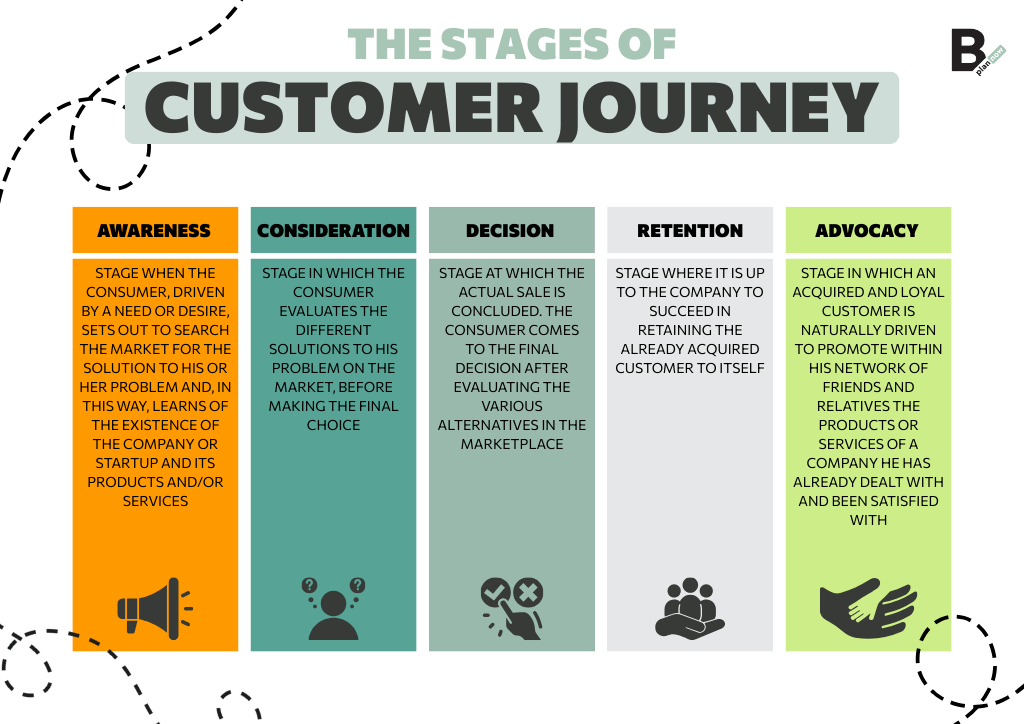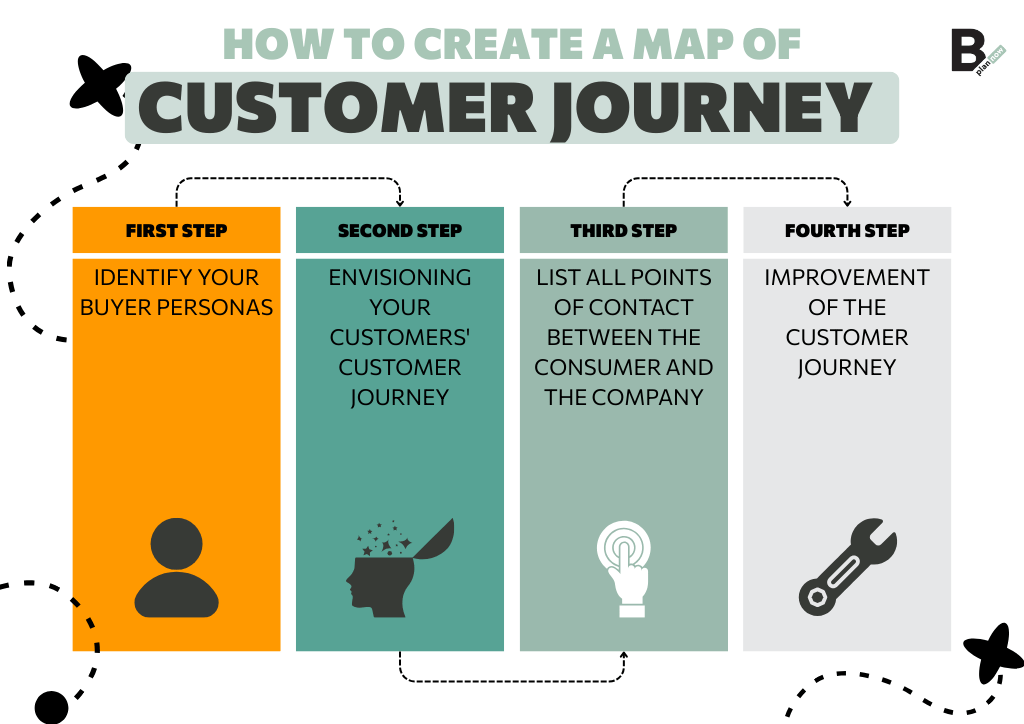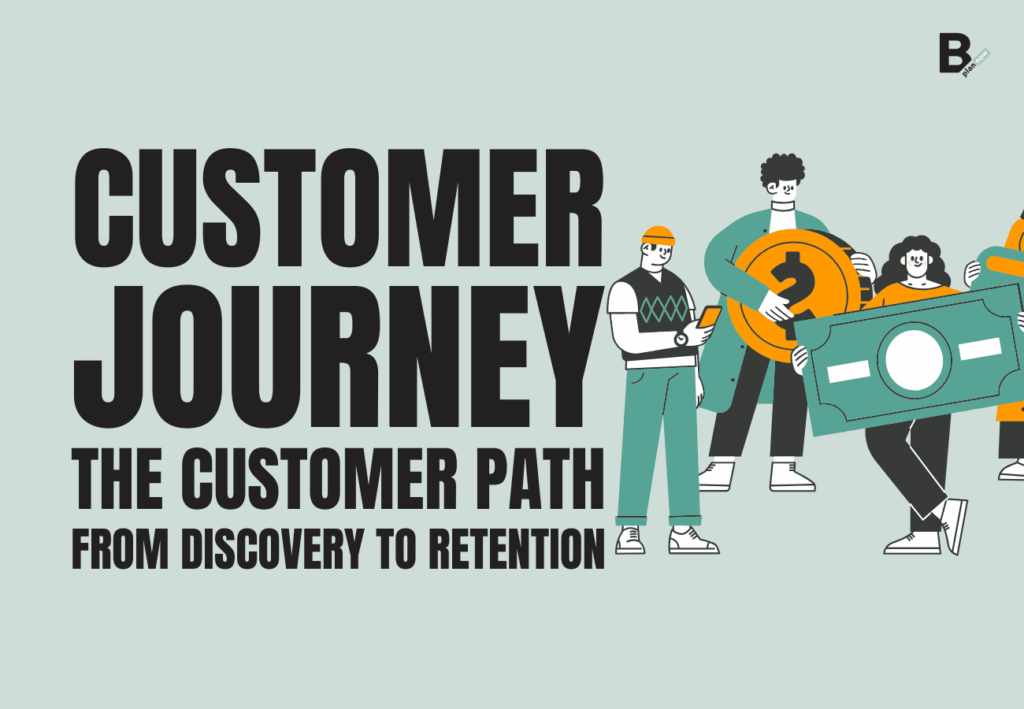Mapping the Customer Journey allows a company to optimize its interactions with customers, improving their overall experience and conversions. But what exactly is it all about? And why is it so important?
As you continue reading this guide, you will find out what the Customer Journey is, what benefits it offers, what its main steps are, how you can create a customer journey map, and what tools can help you in this regard. You will also find some practical examples of the Customer Journey, which will help you understand even better why it is an essential resource for the success of your business.
What is the Customer Journey
The concept of “Customer Journey” refers to a marketing model used to describe and analyze the so-called “path to purchase,” that is, the consumer’s journey to place an order.
As you will find out in a moment, this is not a one-size-fits-all model because companies are different from one another and the interactions they have with their customers, potential and acquired, are also different, even in light of the new technological tools available to users. Therefore, it should be clear to you right now that the Customer Journey must be built from your business model.
Having clarified this aspect, it is time now to learn more about what we are talking about.
Customer Journey: definition and importance
Just now we referred to the literal meaning, but the definition of Customer Journey is, of course, more detailed: customer journey refers to the process that characterizes all interactions between the consumer and the company, beginning with the need to satisfy a need or desire and culminating in the purchase of a product or service, and continuing through the after-sales phase. The various points of contact between company and consumer, whether online or offline, are referred to as touchpoints.
Mapping the Customer Journey gives you the ability to identify obstacles and/or doubts that the consumer has to overcome before making a purchase and, more importantly, to break them down. By optimizing, in this way, your interactions with the customer, you can increase your company’s sales and revenue.
Before learning more about the customer journey by exploring the various stages involved in the process, it is worth explaining the difference between Customer Journey and Customer Experience.
Customer Journey vs. Customer Experience
Customer Experience refers to the overall experience the customer has during his entire relationship with the company. His experience, therefore, is not limited to the moment of purchase, but refers to the set of interactions he has with the company throughout his entire journey, including the after-sales phases. This path, along which all the touchpoints (direct and indirect) between customer and company unfold, is precisely the Customer Journey.
The Stages of the Customer Journey
Although there are various theories about the Customer Journey, many experts agree in identifying five main stages in the customer journey.

They are:
- Awareness
- Consideration
- Decision
- Retention
- Advocacy
Awareness: the first contact with the brand
The Awareness phase identifies the moment of the first contact the consumer has with the brand. In more detail, this is the stage when the consumer, driven by a need or desire, sets out to search the market for the solution to his or her problem and, in this way, learns of the existence of the company or startup and its products and/or services.
At the Awareness stage, precisely because of what has just been said, the “secret” to getting the consumer’s attention is to explain quickly and easily why your products or services are the best and most effective solution to their problem.
Consideration: the evaluation of alternatives
The Consideration stage, like the Awareness stage, also precedes the moment of sale. Indeed, at this stage, the consumer evaluates the different solutions to his or her problem in the marketplace before making the final choice.
In order for the choice to fall on your products or services, you need to explain in even more detail why your solution is the best there is on the market, listing all the benefits you are able to offer. Particularly helpful in this regard are successful case histories and testimonials from existing customers who have been particularly satisfied.
Decision: purchasing and direct interaction
The third stage, the Decision stage, is the central one because it is where the actual sale is concluded. The consumer, as mentioned earlier, comes to the final decision after evaluating the different alternatives in the market.
At the Decision stage, it is very important to avoid any hiccups or difficulties for the consumer at the time of purchase: the risk, in fact, is that if he or she fails to complete the transaction quickly and easily, the consumer may desist from his or her intent and turn to a competitor to solve his or her problem.
Retention: loyalty and after-sales
The Retention phase follows the sales phase: in fact, Customer Retention is when it is up to the company to succeed in retaining to itself the customer who has already been acquired (i.e., who has already completed a purchase).
To keep the bond with the customer strong (i.e., in more technical terms, to build customer loyalty) you have several tools at your disposal: from loyalty programs to up-selling and cross-selling techniques, via E-mail marketing activities with personalized messages tailored to the needs of individual customers.
Be very careful not to underestimate this stage: it is far more cost-effective for a company to retain existing customers than to invest in acquiring new ones.
Advocacy: spontaneous brand promotion
The fifth and final stage of the Customer Journey is what is called Advocacy. If you have not committed any missteps, an acquired and loyal customer is naturally driven to promote within his or her network of friends and relatives the products or services of a company with which he or she has already dealt and remained satisfied.
This is also a step that you would do well not to underestimate because consumers, as already mentioned, when they have to choose between different solutions on the market often rely precisely on the positive experiences of other consumers.
How to create a Customer Journey map
Now that you have all the theoretical tools to understand what the Customer Journey is and how it works, it is time to move on to practice, creating your map. This is also a process that consists of several steps.

The first move you need to make is to identify your Buyer Persona. These are fictional, generalized representations of your company’s ideal customers, and they are really very useful tools because they give you a clear idea of your target audience. Remember, in this regard, that the Customer Journey of a young person is quite different from that of a retiree.
The second step is where you have to envision your customers’ Customer Journey. That is, you must put down in black and white how consumers can discover your products or services and then decide to buy them. To do this, you have to identify with consumers and imagine how you would go through the five steps mentioned in the previous paragraph. The “secret” is to think of the Customer Journey as an actual itinerary and first establish the final destination (goal), so that you can then more easily identify the route to get there and possible stops.
With the third phase you need to be even more specific and list all the touch points between the consumer and the company along their path to purchase. This phase is useful to find out how the consumer interacts with the company and any obstacles he may encounter on his journey. You need to ask yourself some crucial questions. We mention two out of all: Is the purchase page easy to understand and does it have good usability? Is the customer service easily found by the consumer?
The fourth and final step is dedicated to improving the Customer Journey: in a nutshell, in this step you need to remove the obstacles you identified in the previous step. Collect feedback to see if the decisions you have made have positive feedback, and don’t forget to update the Customer Journey as time goes by so that it always keeps up with the new needs and desires of consumers.
Customer Journey Mapping Tools
You don’t have to build the Customer Journey all by yourself. Teamwork is very important, and more importantly, there are specific tools that can help you (indeed, help you) map your customers’ journey.
Mapping software and templates
There are three reference resources for those who need to map the Customer Journey:
- Miro is a tool that allows you to map the Customer Journey from various predefined frameworks and also gives you the ability to interact with the team and brainstorm together;
- Mural provides you with several templates to better understand the needs of customers and the obstacles they may face on their journey;
- Smaply is a tool that allows you to map the Customer Journey online, using various templates and pre-filled maps.
Examples of Customer Journey
To get an even clearer idea of what a Customer Journey is, how it works, and how to build it, it may be helpful for you to know some practical examples.
It is useful to reiterate, having arrived at this point, that there is no one-size-fits-all way to build a Customer Journey, but, that said, it is possible to identify certain elements and guidelines that recur based on the company’s area of expertise. We cite, by way of example, three of them:
- Customer Journey for an e-commerce site: after learning about the existence of the brand, the consumer’s journey begins with browsing through the catalog and continues with selecting the products they wish to purchase, adding them to the shopping cart, checkingout, and after-sales service.
- Customer Journey for a bank: the journey starts with a generic inquiry about the products and services the bank offers, goes through opening a checking account or credit card, and then ends with after-sales service.
- Customer journey for a travel agency: the first step, in this case, is the research of possible travel options, which is followed by the booking of the trip itself (from the flight to the hotel via the various activities), assistance throughout the trip, and the final evaluation of the experience upon return home.
Customer Journey and Startups: how to use it for growth and benefits
Up to this point we have talked generically about Customer Journey for companies. In this section, however, the focus is on startups and the focus is on how this particular type of mostly innovative and scalable businesses can use this resource to grow to success.
The early stage, for startups, is critical. These types of companies optimize their products or services primarily through the user experience of their early adopters, that is, the first individuals who use the startup’s products or services. Keep in mind that these individuals have a great deal of influence within a social system because it is to them that other consumers turn for “buying advice.”
That’s not all: for a startup, the “secret” lies in optimizing processes between departments so as to eliminate any possible waste of time that could trigger the risk of potential customers fleeing and thus improve conversion rate and retention.
Why the Customer Journey is essential to the success of your business
We have reached the final stages of this guide dedicated to the Customer Journey. Before we say goodbye, it is appropriate to reiterate why mapping the customer journey is essential to the success of your business.
The Customer Journey, by leveraging the effectiveness of storytelling, allows you to better engage customers. Not only that, mapping the journey also gives you invaluable data on how to best meet their needs. In this regard, remember the words of Kate Zabriskie:
“Customer perception is your reality.”
There is one final point to consider: in the face of the significant impact the Customer Journey has on your business, it requires commitment and consistency. It is not enough to map the customer journey once, because their tastes can change over time and new technologies can revolutionize the market. Not only that, your brand can also evolve over time. In light of this, it is critical to reevaluate the Customer Journey map regularly so that you can eliminate elements that have stopped working.
Do you want to read all the articles related to the stage your startup is in?


